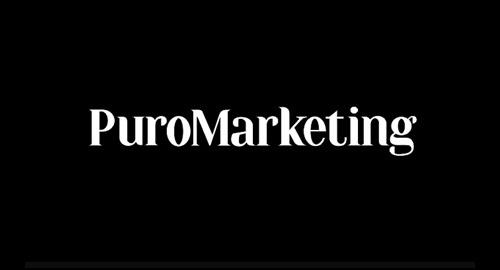PuroMarketing Full Living Brands: rewriting the brand paradigm
Most companies, brands and products -in terms of branding- continue to live in the last century. Some, even, in more remote times.
And it is that the internet infiltrated our lives calmly. However, we no longer consult the paper dictionary. We do not queue at the cinema or at a concert to get tickets. Even many times we buy clothes without stepping on a physical store.
In short, our habits, our customs, our experiences have changed. So much and in such a short space of time, that we hardly realize it if we don't look back.
Older advertisers will remember those days when you killed for a certain color marker whose life came to an end - at three in the morning - with everything closed. The client expected the sketch first thing in the morning and you had to figure out how to finish the job. The irruption of the computer was smooth because, among other things, colors were never spent at the least opportune moment in Photoshop or Paint.
And you will say, what does this have to do with brands? Well, enough.
From that time, and as a legacy from previous ones, we all had very clear concepts regarding brands. You could find them in any self-respecting corporate identity manual. An example: a brand was limited to two or, at most, three colors. For some of my students this doesn't make any sense until you clarify that, at that time, the opportunities to reproduce a brand in color were concentrated in the graphic world: the printing press. The cinema or television had a lesser role given the high costs they entailed.
The Internet has rewritten the paradigm of brand presence when it comes to color. And, although this goes a long way, I'll leave it here.
Connected with the above was the revered use in the shape, size and proportion of the mark. Another heritage that made a lot of sense when you burned your genre - to distinguish it from the competition - into the fire.
Here comes the first modern innovation. When cinema arrives and becomes a mass phenomenon, the big production companies intend to impact stakeholders with the maximum potential that the medium offers them: shape, size, color, movement and sound. From there are born the glorious headers of the main film companies that we all remember.
Television, a medium analogous to cinema, follows in its wake and begins to use animations in its headers, bumpers, etc.
Here the first alarm goes off: the internet has meant unrestricted democratic access not only to color; also to shape, size, movement and sound.

Who takes advantage of all this?
You tell me. Because I don't see it.
The vast majority of brands and advertisers continue to cling to a model that expired with the inauguration of the digital age.
Years ago, with the Internet at full capacity, I proposed to an advertiser who was determinedly working to differentiate himself from his competition, to change his brand to a Full Living Brand. An innovative model that was adjusted to the high demand required by its presence on the Internet. He raised his hands to his head, perceiving that his brand was going to leave the quiet backwater of the static world, for a brand philosophy willing to present the living face of the company.
It is surprising to see how high-profile companies invest large sums of money in marketing, without being aware that their brand ceased to exist as such -or to be fully perceived, which amounts to the same thing-, in the context of the new paradigm.
Fortunately, this is starting to change.
Full Living Brands, what are they and what are they for?
We live in an animated universe where light, sound and movement shape our reality. What's more, the human eye is adapted -for a basic matter of survival- to perceive movement above any other stimulus such as size, color or shape.
Applied to your brand, it means that if it is not alive, you are missing out on opportunities.
The first contact you have today with a product, brand or company is the internet. How long are you going to let your brand be perceived as an inanimate element? If your company is a living being, your brand should be too.
Markets change and we strive with marketing and company policies to adapt our products to new demands. Which is fine.
Consumers are now prosumers. We know it and we strive to better tune in with our RR.SS. every day. Which is also very good.
A Full Living Brand is a brand full of life. Like your company. Like your clients. like your products.
A Full Living Brand does not lose the essential character of a good brand: distinguish your company before different audiences and differentiate it from its competition. In addition to that, it beats at the tempo of the rhythm set by the markets, the demands and it EVOLVES, just as people do, something that directly influences its positioning.
The animated film logos that I mentioned before have in common with a Full Living Brand that they are works of art. But that is only the beginning. Then comes the constant research and continuous improvement process of our company, which will be transformed into living brand expression: Full Living Brand.
Today is Full Living Brands time. Tomorrow will be late.








